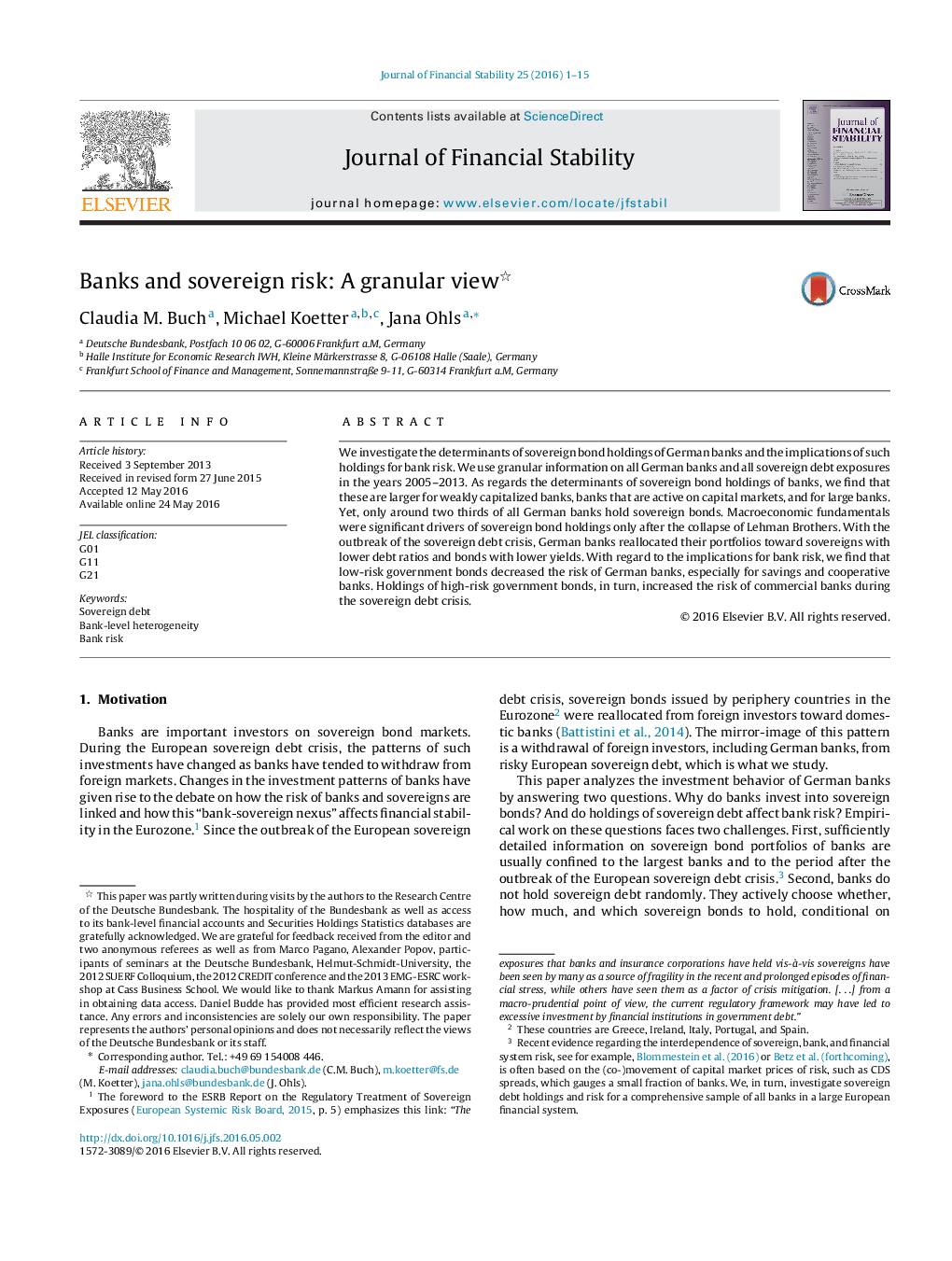| Article ID | Journal | Published Year | Pages | File Type |
|---|---|---|---|---|
| 998796 | Journal of Financial Stability | 2016 | 15 Pages |
•We analyze the sovereign-bank risk nexus for the population of German banks.•Granular data reveals that only around two thirds of these banks hold sovereign debt.•German banks with weaker financial profiles hold more sovereign bonds.•Sovereigns’ debt bearing capacity mattered for portfolio choices only after 2010.•Exposures to low-risk debt reduced bank risk for local banks, but high-risk sovereign debt exposures increased the risk of commercial banks.
We investigate the determinants of sovereign bond holdings of German banks and the implications of such holdings for bank risk. We use granular information on all German banks and all sovereign debt exposures in the years 2005–2013. As regards the determinants of sovereign bond holdings of banks, we find that these are larger for weakly capitalized banks, banks that are active on capital markets, and for large banks. Yet, only around two thirds of all German banks hold sovereign bonds. Macroeconomic fundamentals were significant drivers of sovereign bond holdings only after the collapse of Lehman Brothers. With the outbreak of the sovereign debt crisis, German banks reallocated their portfolios toward sovereigns with lower debt ratios and bonds with lower yields. With regard to the implications for bank risk, we find that low-risk government bonds decreased the risk of German banks, especially for savings and cooperative banks. Holdings of high-risk government bonds, in turn, increased the risk of commercial banks during the sovereign debt crisis.
